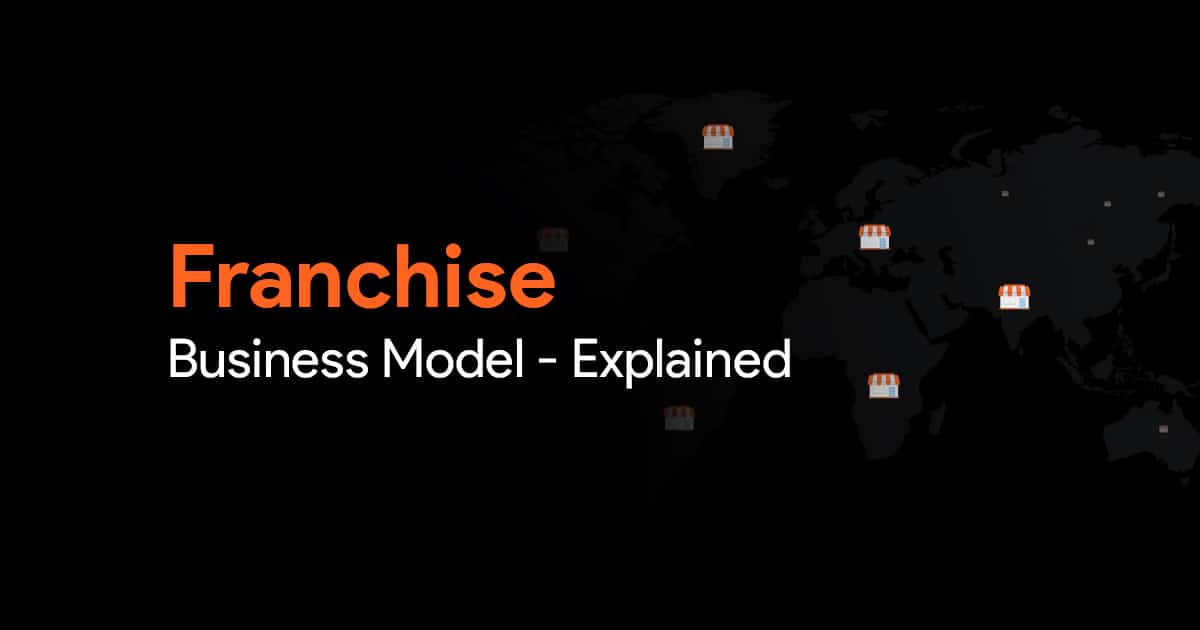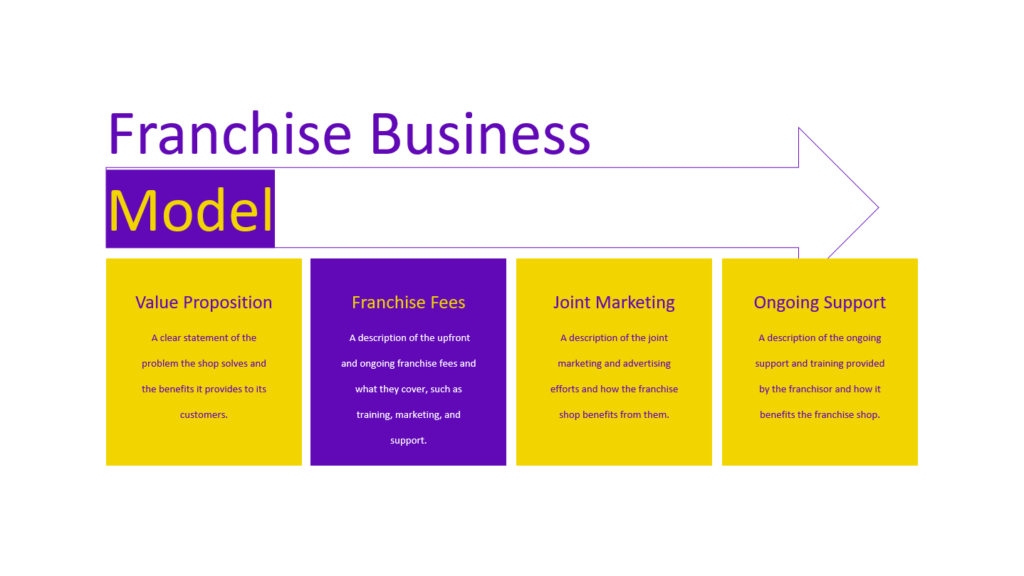Franchise Business Model – Explained

McDonald’s, Starbucks, Domino’s, Dunkin’ Donuts, Taco Bell! You surely have heard of these brands! All these businesses operate on a franchise business model.
Want to know everything about franchise business models in detail? Then, we’ve got you covered!
Table Of Contents:
- What is a franchise business model?
Franchisee
Franchisor - History of franchise business model
- Types of franchise business models
Business Format
Manufacturing Franchise
Business Distribution Franchise - Pros and Cons of the franchise business model
- Final Thoughts
On a similar note, if you want to learn more about business models, and business models, check out this informative article.
What Is A Franchise Business Model?
Franchising allows the aspiring business to become the owner of one or more locations of a larger company. There are two parties in franchising, i.e., a franchisee and a franchisor.
A franchisee is a group or a person buying a franchise together. The franchisee comes to terms with the big company (franchisor) on how the business will run. In turn, they get all the rights to operate under the brand’s logo, reputation, and name.
In addition to this, they also receive marketing materials such as supplies, location, and more.
In other words, a franchise is a business model where an entrepreneur operates the business. They use the company’s logo, name, trademark, product, branding, and business system. In return for fees and other payments like royalties, licensing fees, etc., depending upon the terms of the contract of both parties.
Franchisor
The franchisor is a parent company that sells the rights to franchise its brand or company to prospective franchisees. A franchisor is a person who has developed the brand, company, and operating systems.
On the decision to franchise the business, the franchisor offers the franchisees the right to their recognizable trademark, proven business model, established business system, and training and support.
Franchisee
The franchisee is an individual who purchases the rights to sell the services and products. Also, they utilize established and proven business systems.
Though the franchisee means buying an established business, franchisees should work hard to gain market trust and loyalty and attract talent. This will help them in growing their business.
After all, it is the franchisee who runs the day-to-day business activities of a business.
History Of Franchise Business Model
The franchise business model is not new. It was developed long before it became popular.
It started back then at the time of ancient china and the middle age. When the landowners allowed the serfs and peasants to perform business on their property, like selling products or hunting. In return for this, they had to pay in kind, such as commission or tax, for their business on their territory.
However, the modern franchise business model was started by Benjamin Franklin. He agreed with Thomas Whitmarsh to offer printing services in Charleston, South Carolina, in 1731.
Moreover, later than a century, Issac M. Singer used the franchise business model to give out his sewing machines.
But the model didn’t become that popular at that time. But now, with the advent of the most popular brands like Dunkin’, McDonald’s, etc., this business model has become so common.
Currently, there are hundreds of franchise business models operating worldwide.
Franchise Busines Model Presentation Slide (Template)
Types of Franchise Business Models
The following are the three types of franchise business models.
1. Business Format Franchise
This is the most frequent business model franchise. Along with using the brand and trade name of the franchisor, the franchisee also has access to sales and marketing strategies, operations and distribution systems, training, and support services.
Some instances of business format franchises are McDonald’s and Dunkin Donuts.
2. Manufacturing Franchise
Moving onto the next, which is manufacturing franchises. In this franchise business model, the franchisor grants the selling and manufacturing rights to the franchisee.
However, the franchisees should sell the goods under the brand and trademark of the franchisor. The manufacturing franchise business model is common in the beverage, food, automobile, and clothing industries. Examples include Nestle, Hyundai, Coca-Cola, etc.
3. Product Distribution Franchise
Under this product distribution model, the dealers get the right to distribute a brand’s goods. This business model is the same as the manufacturer-retailer business model.
Anyways, the franchisee must pay some fee, or they must purchase a minimum amount of products to get the right to sell the goods.
Generally, the franchisees sell only the products of the franchisor. But there are some agreements where they have the choice to sell only some specific brand products which are profitable to them.
Talking about history, in the nineteenth century, this model was initiated by Coca-Cola and Singer to sell their products. Nowadays, Ford, Exxon, and Coca-Cola offer this kind of model to their partners.
Pros and Cons Of the Franchise Business Model
Every coin has two sides, and so the franchise business model has! Keep reading to learn about their pros and cons.
Pros Of the Franchise Business Model
✓ Less Risky
If you purchase a franchise, you already know that the product is successful. First thing, because it has brand recognition.
Assuming that the franchise is in a good location and the brand continues to attract customers, you should have a pretty good business.
Moreover, if you want to be a small business owner but you are not willing to risk your time and capital on a venture that can fail, then franchising is the best option available for you!
✓ Brand recognition
Brand recognition is a big benefit that franchisees get at the time of starting a franchise.
If you begin a business from scratch, then you would have to develop your customer base and brand from the ground up. And this would take a lot of time.
On the other hand, the franchise is an already established business with a good customer base.
So, when you open up your franchise with good branding, then people will automatically realize what your business is, what you can offer, and what they can expect.
✓ Less Failure Rate
Generally, starting franchises have less failure rate than solo businesses. When a person adopts a franchise model, that means they are adopting or joining a pre-established business. This is the biggest plus point here.
Also, you will have the reassurance that the services or products you will be offering are in demand. So, it’s a win-win!
Cons of Franchise Business Model
✓ High Startup Costs
Starting a franchise involves higher startup costs than the costs incurred on starting a small independent business. So, franchising might not be a good option for you if you are trying to incorporate a small business without taking out a loan or putting in a lot of money.
✓ Lack of financial privacy
Another disadvantage of franchising is that it lacks privacy. The franchise agreement will stipulate that the franchisor can overlook the whole financial data of the franchise. This means no financial privacy!
However, it might not be an issue if you take proper financial guidance.
✓ Lack of Flexibility
The other downside of franchising is that you might have less flexibility if you begin a business from scratch.
For instance, you may need to follow certain specific guidelines or use the suppliers approved by the franchisor while operating your business.
Final Thoughts
By now, you must have realized that a franchise business model is ideal for people who do not wish to take high risks. However, if you’re just starting your entrepreneurship journey, this model is just for you! You get everything served on a platter; all you need to do is eat!



